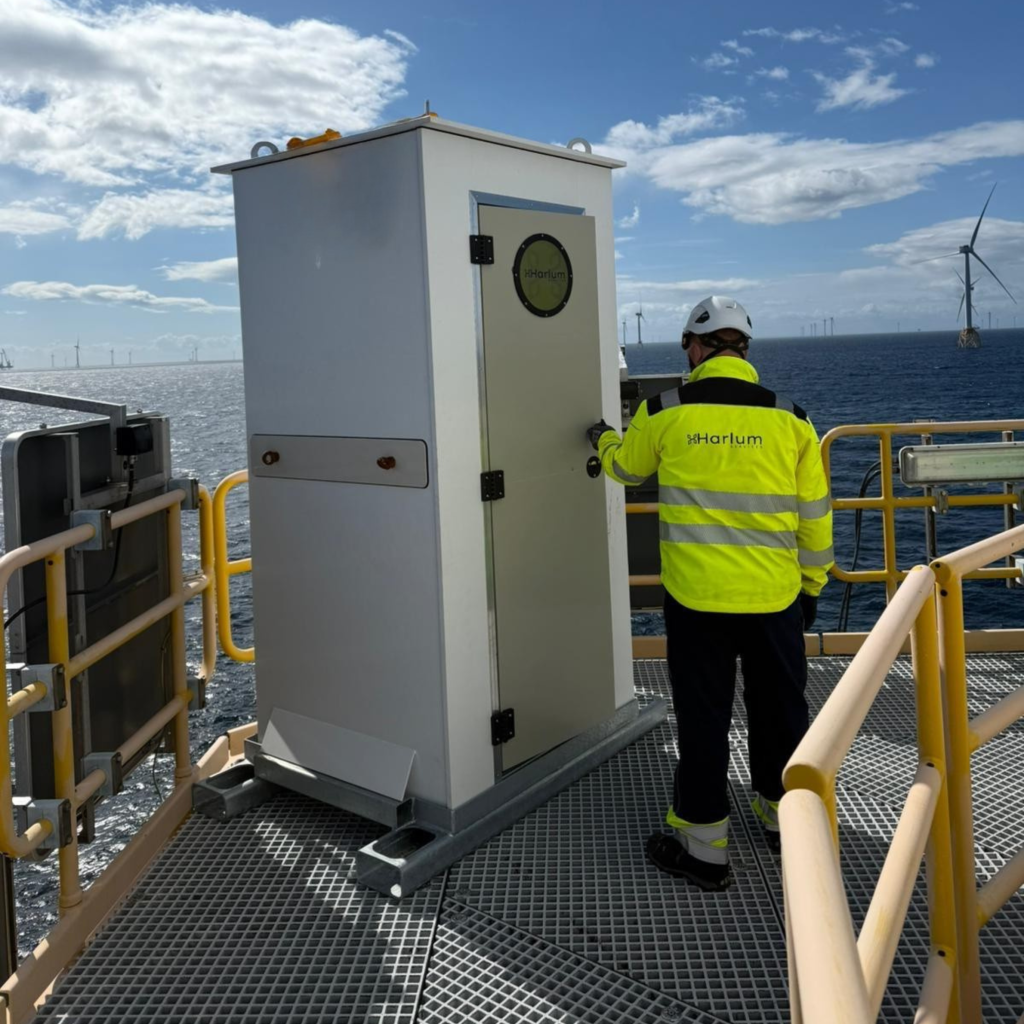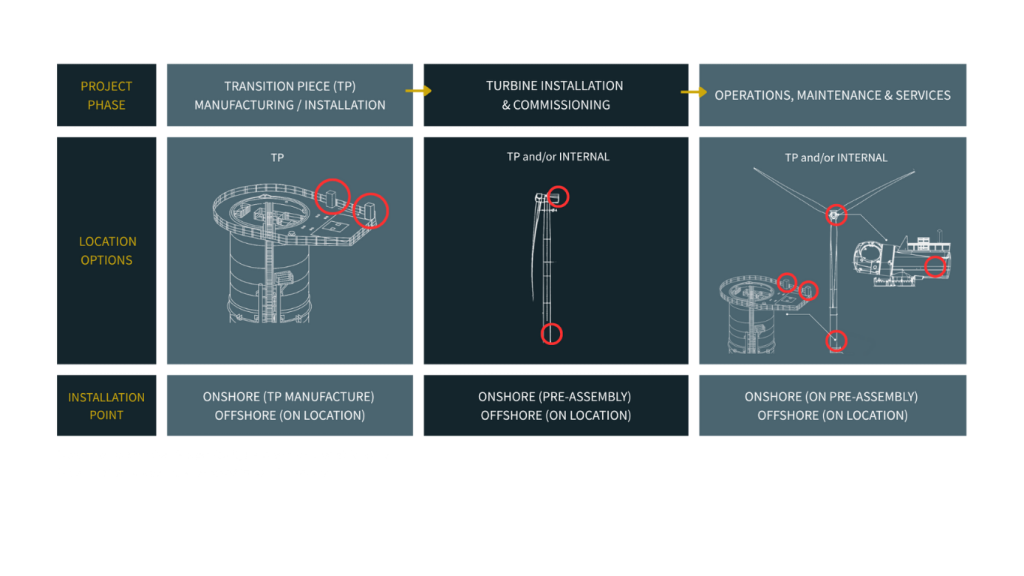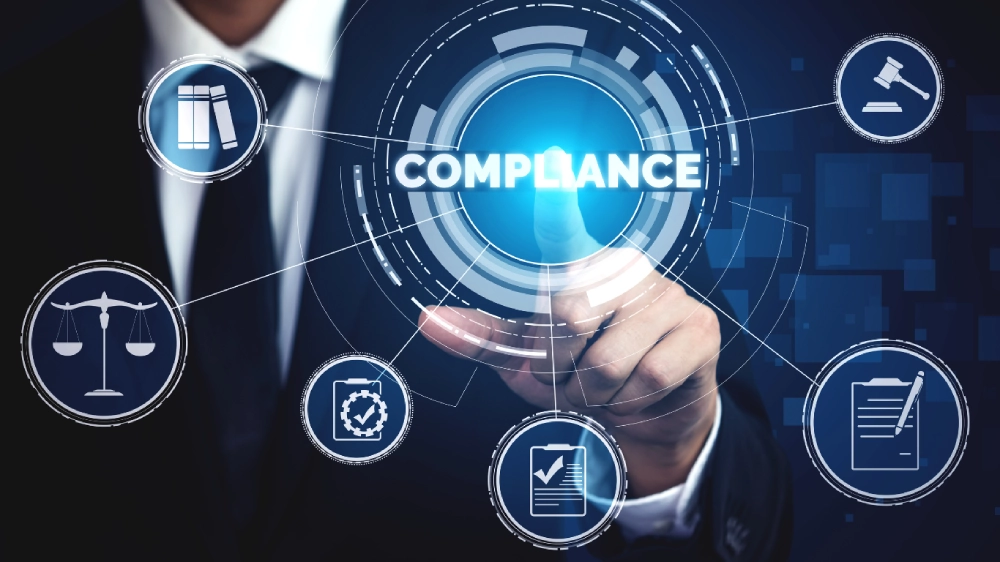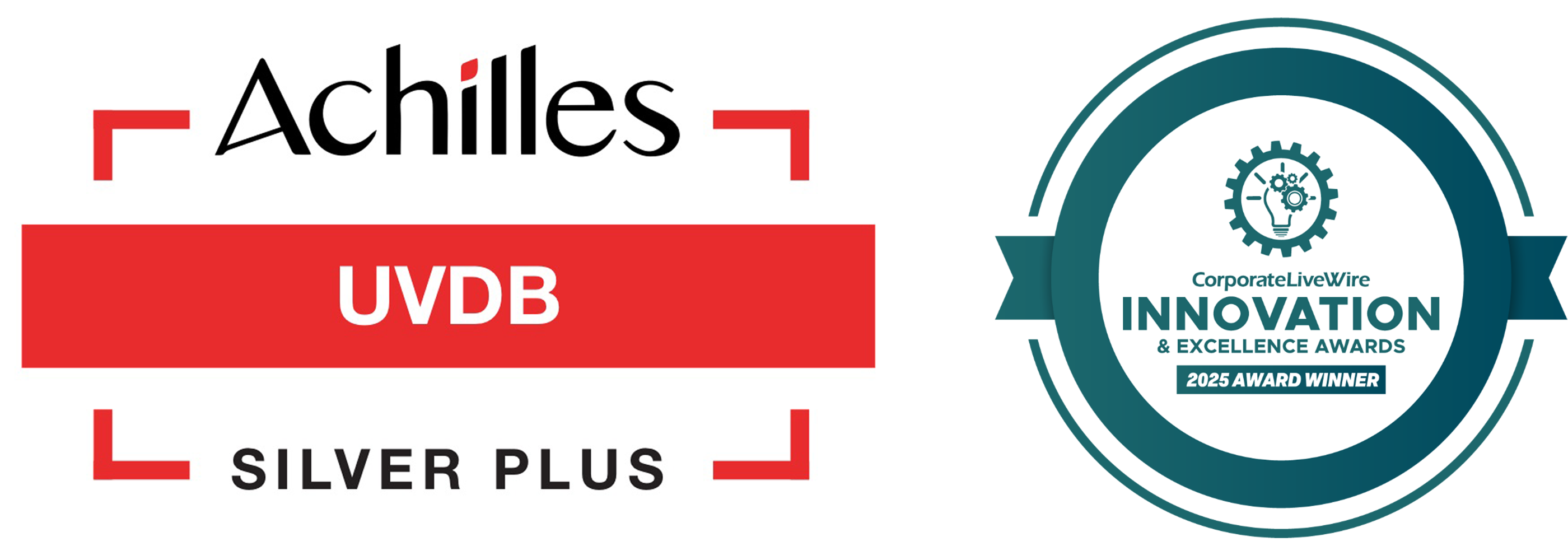
Why Offshore Wind Welfare Is Needed
- Compliance: welfare for personnel and appropriate waste disposal.
- Moral: basic human rights, dignity and safeguarding the workforce.
- Economic: lower fuel costs of support vessels used, and less productivity downtime.
- Environmental: protect marine life, improve carbon footprint and eliminate waste dumping.
We Build Your Welfare, Your Way At Every Project Phase

You Choose Your Welfare, Your Way
- Transition Piece (TP)
- Inside The Turbine
- Drop box
- Split box other
- Hot water unit
- Hand gel dispenser
- Full Service (Onshore/Offshore)
- Part Service Onshore
Key Benefits
Designed for Regulatory Compliance
Our offshore wind turbine welfare unit supports compliance with CDM 2015 Schedule 2 and Workplace Regulations 1992, Regulation 20. Our patented design removes industry barriers, simplifies compliance, prioritises workforce welfare, and boosts operational efficiency.
Fully Customisable
With non-slip surfaces, and easy-to-clean materials, our welfare unit ensures hygiene and safety. Integrated ventilation and hands-off waste management provide a fresh, comfortable environment.
Built for Resilience and Efficiency
Built on our patented design, this turbine welfare unit is engineered to withstand a 1-in-100-year storm. With secure installation, weather-resistant construction, solar lighting, and sustainable materials, it delivers safety, reliability, and zero external power, built to last in the harshest offshore conditions.
What Your Wind Techs Are Telling Us
After sharing a lift with someone holding a clear bag with what was once their breakfast (something I wouldn’t wish on my worst enemy) …it’s about time someone tackled this issue which seems such a basic requirement in a workplace!
I'm sure that with better facilities offshore it would encourage more women into the offshore industry and for those with debilitating conditions such as crones disease or colitis would be open to the idea of working offshore. Better facilities can only be good for us all.
One of the girls doesn't go to the toilet at all on the turbine. Sometimes we're working 12 hour plus shifts on the turbine and that's in summer days with very hot conditions and she won't drink so then she won't have to go to the toilet.
I'm sure that with better facilities offshore it would encourage more women into the offshore industry and for those with debilitating conditions such as crones disease or colitis would be open to the idea of working offshore. Better facilities can only be good for us all.
Are You Legally Compliant?
Ensuring compliance with workplace regulations is essential to protect your workforce and your business.
Workplace (Health, Safety, and Welfare) Regulations 1992
- Facilities must be accessible to all employees.
- Employers must provide an adequate number of suitable and sufficient toilets.
- Separate facilities should be provided for men and women unless each toilet is in a separate, lockable room.
Construction (Design and Management) Regulations 2015 (CDM 2015)
- Provide suitable and sufficient toilets.
- Offer appropriate changing facilities for workers wearing special clothing, such as immersion suits. Our welfare unit doubles as a changing room with storage, ventilation, and lighting.
- Rest facilities must include seating, tables, weather protection, and provisions for eating meals (e.g., a kettle or microwave).
Harlum’s Wind Turbine Welfare Unit is designed to help you meet these regulations seamlessly, ensuring your site is safe, compliant, and supportive of your workforce.


Frequently Asked Questions
Our patented welfare unit is specifically designed for secure installation on the foundation of an offshore wind turbine. The unit is bolted down to the TP floor, with additional lashing points for enhanced stability. These points are custom-made, allowing us to work with the existing TP design and integrate seafastening measures to withstand anticipated weather conditions, with a solid safety margin built in. Additionally, we use high-grade, corrosion-resistant materials specifically chosen to endure the harsh, corrosive offshore environment, ensuring long-term durability and reliability. We also provide a comprehensive, low-maintenance service for waste management, addressing a key concern for offshore installations. This full-service solution covers all maintenance and waste handling, delivering a seamless, hands-off experience for our customers and their teams.
The toilet unit is fully self-contained and positioned within the welfare unit, which is securely fastened to the TP (transition piece) of the turbine. This entire welfare unit remains on the TP as a permanent fixture. The toilet system is designed with an exchangeable waste container, which is swapped out to manage the waste stream effectively.
The toilet system uses a water-soluble, non-formaldehyde additive to manage waste and control odor, lasting 30 days depending on usage and temperature. When it’s time for servicing, the toilet seat is removed, and the waste container is sealed with a secure screw lid. This entire sealed container is then removed from the welfare unit on the TP and taken back to shore for proper waste disposal and reconditioning. A freshly prepared waste container (Toilet) is then reinstalled into the welfare unit, allowing the welfare unit to continue functioning without disruption. This self-contained setup ensures minimal maintenance and keeps waste management straightforward and efficient for the teams.
Our solution and design allows for a reduction in the service time-frame, as the service period only starts after the toilet is first used after being installed or replenished. For example, if no one has been on the location for two months, that period wouldn’t count toward the servicing schedule. This makes maintenance much more efficient by ensuring we only service the toilets when they’ve actually been used, avoiding unnecessary work.
As a proud Teesside-based company, we are committed to manufacturing exclusively in the UK. By partnering with UK wind farms, we exemplify the benefits of utilising local content and regional expertise. Our patented design and manufacturing facility, located in the UK, aims to contribute significantly to job creation across the country.

